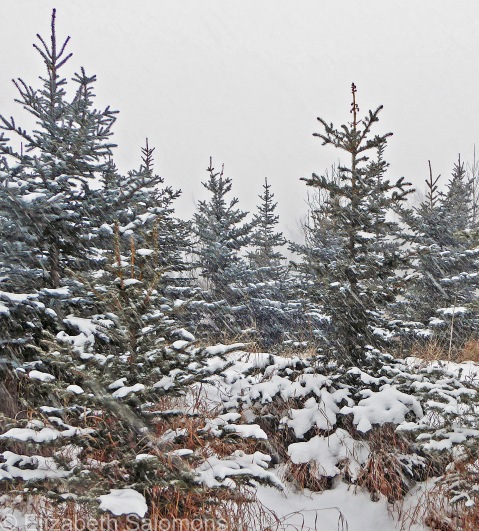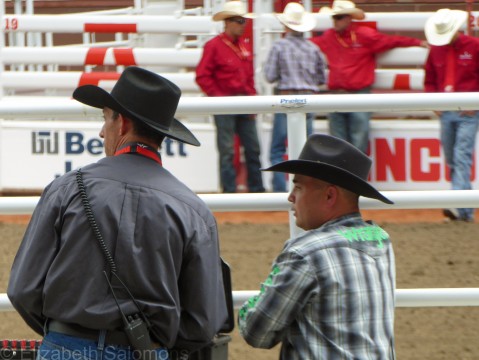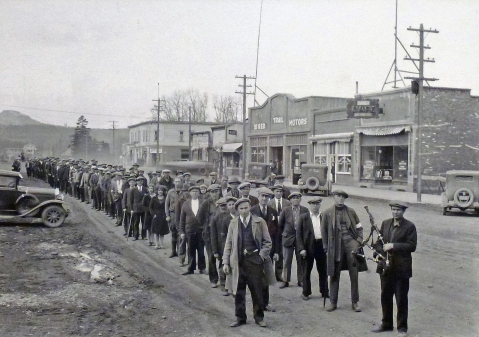Merry Christmas!

Fish Creek Provincial Park, Calgary, Alberta
You Know It’s Cold When …

I know, I know. Here I go again, talking about the weather.
For the benefit of my non-Canadian readers (in case you haven’t figured this out yet), talking about the weather is a bit of a national obsession.
The western part of Canada is in the middle of a polar vortex. I got outside today to tramp through the deep snow that arrived overnight in Vancouver, but in this post, I’m going to talk about the next province over. That would be Alberta, where a lot of my family lives.
They’re cold, to put it mildly. My sister in Calgary was faced with a commute this morning in temperatures of –40° C.
Ouch!
In fact, it’s been too cold all week for the Penguin Walk at the Calgary Zoo. That’s right. The zoo’s king penguins, native to the sub-Antarctic, had a Snow Day. And Calgary today was colder than Antarctica.
Double ouch!
I took these photos of the Calgary Zoo penguins almost a year ago, when I visited the zoo on a much balmier day than today.

Calgary Stampede

It first dawned on me that people from outside our country had some wildly out-of-date notions about Canada on my first ever trip to Europe. It happened when one of my Dutch cousins began asking questions about what life in Canada was like.

“And the cowboys,” she said. “You have lots of cowboys, right?”

I hesitated. I was acutely aware that I was about to burst her fantasy bubble.

“Uh, some,” I said. “You mostly see them at the rodeos.” I think an awkward attempt to explain what happens at rodeos followed ― awkward because I had never actually been to a rodeo. I quickly changed the subject.

Then again, if you are a couple of Italian tourists visiting Calgary during Stampede Week ― like the ones I met standing beside me at the parade ― it’s easy to go home and think Canada is all about the cowboys.

I suppose there are worse stereotypes out there.

The Calgary Stampede (also known as The Greatest Outdoor Show on Earth) finished up just a week ago. I went this year for my first time ever ― and had a blast.

First held in 1912, the Stampede became an annual event in 1923. These days, the rodeo attracts competitors from all over North and South America.

The Treaty 7 First Nations have been an integral part of the Stampede since its beginnings.

In addition to the parade (which starts the Stampede off with a bang), the rodeo, and the chuckwagon races, there are lots of animals to see.

There’s also a midway, and lots and lots of live music. And pancakes.
And, every year, the Indian Village.

If you’re feeling underdressed, don’t worry. There are plenty of places where you can get your proper Stampede attire. For a price.

The Calgary Stampede celebrates Alberta’s history, but also its present. Ranching is big business in Alberta ― half of the country’s beef is raised here.

I’ve lost touch with those Dutch cousins of mine, so I don’t know if they ever made it to Canada. But if they did, I sure hope they got to see a cowboy or three.
Through My Lens: 4th Street SW

I’ve been hanging out in Alberta for the past ten days, which means I have a whole whack of photos to go through. That will take me a while because, well … you know. It’s summer.
And so, to keep this blog rolling, here’s a photo I took last summer. This is downtown Calgary. Which is exactly where I was two days ago.
The Glenbow

Calgary’s got yet another thing going for it, and that’s the Glenbow. The Glenbow is an art and history museum I’ve long heard about because it’s not just a museum, it’s also a library and archive. Archives are like crack for historians, and the Glenbow is Canada’s largest non-governmental archive.

Those archives contain unpublished diaries, letters, and minute books of thousands of Alberta families, organizations, and businesses. Its library has more than 100,000 books, pamphlets, journals, newspapers, and government documents related to the history of Western Canada. And its image collection includes photographs, posters, and cartoons that tell the story of the Canadian West from the 1870s to the 1990s.

Whew! Makes me want to go research a book!
What the Glenbow Museum does particularly well is tell the story of southern Alberta, including its first peoples.

It also has a permanent exhibit with the unlikely title of Mavericks: An Incorrigible History of Alberta. It’s about some of the famous (and infamous) Albertans who shaped the province’s history over the past 150 years. Did you know the fellow who discovered oil in Leduc in 1947 ― that would be Ted Link who worked for Imperial Oil ― was told by his head office in Toronto to stop drilling? Head office had given up on the search for oil. Mr. Link, convinced that the entire province was lying on a bed of sedimentary rock (a possible source of hydrocarbons), pretended he hadn’t received the order. Two days later, Leduc No. 2 blew in and changed the course of the province’s history.
Want to learn about more stories like this? Be sure to stop in at the Glenbow the next time you’re in Calgary.

The Famous Five

Calgary has one more impressive feature that I want to post about, and that is its monument to the Famous Five.
No, I’m not talking about the child sleuths made famous by English children’s author, Enid Blyton. I’m talking about the five Alberta women who took the Canadian government to court when they were told their gender made them ineligible to sit as senators.
It all started when Emily Murphy, the first female magistrate in the British Empire, was recommended for a Senate seat in 1917. Prime Minister Robert Borden refused to appoint her, saying that he was prevented from doing so by the constitution. He was referring to Section 24 of the British North American Act, 1867, which states the following:
The Governor General shall … summon qualified Persons to the Senate; and, subject to the Provisions of this Act, every Person so summoned shall become and be a Member of the Senate and a Senator.”

“Qualified persons,” said the prime minster, referred only to men. He had a problem, though. Emily Murphy had popular support ― a lot of support. Half a million Canadians signed petitions and wrote letters. And Prime Minister Borden needed the vote of Canadian women to stay in office. So, over the next decade, four consecutive federal governments declared their support for Emily Murphy, but each insisted it was prevented from appointing her to the Senate because of the constitution.
After ten years of no progress, Murphy tried another tactic. The Supreme Court allowed any five citizens acting together to appeal for clarification on any point of the constitution. And so, in 1927, the following question was put to the Supreme Court of Canada:
Does the word ‘Persons’ in Section 24 of the British North American Act, 1867, include female persons?”
The court ruled no, after which the case became known as the Persons Case. The Famous Five then appealed to the British Privy Council (at that time the court of final appeal for Canadians) and the ruling was overturned on October 18, 1929. Canadian women were declared persons and declared eligible to sit as members of the Senate of Canada.

History geek that I am, I was so pleased to come across the monument to the Famous Five in Calgary’s Olympic Park. The statues were dedicated on October 18, 1999 ― seventy years after the Famous Five won their case ― and a duplicate of the monument stands on Parliament Hill in Ottawa.
Why was it such a big deal that women be able to sit as senators, you ask (other than, you know, the obvious issue of equal rights)?
It’s because until 1968 there was no divorce law in either Quebec or Newfoundland. Residents of those two provinces had to request a private Act of Parliament to dissolve their marriages, a procedure that was usually handed off to the Senate. If the Senate was going to decide family law, women needed representation to ensure equal treatment with men.
Incidentally, I also learned through my research for this post that people were complaining already back in the 1920s about how useless the Senate was and arguing that its members should be elected, not appointed. And, yes, there were federal political parties calling for its abolition.
Plus ça change, plus c’est la même chose, n’est-ce pas?





Calgary

Confession time.
Calgary is uncharted territory for me. Although I grew up in Alberta, before last month, I think I had visited the province’s largest city once, maybe twice, not counting the times I’ve flown or driven through it.
Even last month’s visit was less than 48 hours long. So I make no claim to know the city, but I can say this: what little I’ve seen, I like.
Here’s what impressed me:
# 1: It has Chinooks. These warm winds that swoop down over the prairies from the Rockies can melt a winter’s worth of snow in a day. We had them occasionally in Edmonton, where I grew up, but they are much more frequent in southern Alberta. Chinooks are a welcome respite from the cold Arctic air that usually blankets the province during the seemingly never-ending winters. What I didn’t realize is they occur year round. My first morning in Calgary, I looked out the window, saw a menacing storm cloud, and wondered aloud if it was going to rain. My sister took one quick look, then enlightened me. “That’s a Chinook arch,” she said.
Cool.
# 2: It’s got not just one, but two rivers. And the one I got up close and personal with has lovely parks alongside it.

I say “up close and personal” because the Bow River is pretty much at street level, which seems strange to me. I’m used to the North Saskatchewan River’s deep valley that neatly bisects Edmonton into a north side and a south side. It’s so much easier to understand how devastating the 2013 floods were for Calgary when you see the geography of its rivers firsthand.

# 3: It’s got a CTrain. I love that it’s a street-level train, rather than a monstrous elevated Skytrain like in Vancouver.

# 4: It celebrates its frontier history in a big way. Not only does it host the “greatest outdoor show on Earth” (another confession: I’ve never been to the Calgary Stampede), but just look at the number of thoroughfares named “trail” ― a reminder of the city’s original wagon trails. Macleod Trail goes south towards Fort Macleod; Edmonton Trail goes north. And then there’s Crowchild Trail, Stoney Trail, and the big one: Deerfoot Trail (named after a fast-footed Niitsitapi man who was known for his speed and endurance back in the 1880s).

# 5: It’s got Stephen Avenue, a well-manicured pedestrian mall smack in the middle of its downtown core, which does a nice job of melding the old with the new.

# 6: It’s even got bike lanes!

# 7: And last, but not least, it treats its canine population with a goodly amount of respect.

So there you have it: my whistle-stop tour of Calgary. Hopefully it’s only the first of many.
